 Visvarupa-mahotsava is the date on which Lord Chaitanya’s older brother, Visvarupa, took sannyasa, the renounced order of life. And on the same date some four hundred and fifty years later, our own spiritual master, Srila Prabhupada, also accepted sannyasa.
Visvarupa-mahotsava is the date on which Lord Chaitanya’s older brother, Visvarupa, took sannyasa, the renounced order of life. And on the same date some four hundred and fifty years later, our own spiritual master, Srila Prabhupada, also accepted sannyasa.
According to Vedic literatures, Lord Chaitanya is Krishna Himself, the Supreme Personality of Godhead, come in the present age in the role of a devotee. In the previous age, Lord Krishna came in His original feature and spoke the Bhagavad-gita, and at the conclusion He instructed, sarva-dharman parityaja mam ekam saranam vraja: give up all other duties and surrender unto Me. But people could not understand or appreciate Lord Krishna’s instruction. So later, about five hundred years ago, Krishna came again, not in His original form but in His devotional form as Lord Chaitanya. And Lord Chaitanya taught us how to serve Krishna, how to worship God in the present age.
Lord Chaitanya taught various methods of worship, but He especially emphasized the chanting of the holy names of God, or Krishna. In particular, He quoted a verse from the Brhan-Naradiya Purana (38.126):
harer nama harer nama
harer namaiva kevalam
kalau nasty eva nasty eva
nasty eva gatir anyatha
“One should chant the holy name, chant the holy name, chant the holy name of Hari, Krishna. In this age of Kali, there is no other way, no other way, no other way for spiritual realization.”
He acted like a teacher who shows students how to write the alphabet. The teacher stands in front of the class and writes on the board, “A, B, C, D.” The teacher has no need to practice writing, but he shows by his own example how to form the letters properly. In the same way, God, Krishna, had no need to worship, but to set the example for us, so that we could learn how to worship God in the best way in the present age, He came as Lord Chaitanya and taught and demonstrated the chanting of the holy names of Krishna.
When Lord Chaitanya appeared, the social and spiritual system called varnashrama-dharma was still prevalent in India. In this system there are four social and four spiritual divisions, all necessary for society to function properly. Although we may not refer to them by the same terms, and although the system has not been developed as systematically and scientifically as in Vedic culture, still, by the arrangement of nature, the divisions still exist. In the Bhagavad-gita Krishna says, catur-varnyam maya srstam guna-karma-vibhagasah: “According to the three modes of material nature and the work associated with them, the four divisions of human society are created by Me.” (Gita 4.13) So, the four social orders, or broad divisions of occupational duties, are created by Krishna.
The four divisions include, first, the intelligent class, who are teachers and priests, but mainly teachers. Then there is the martial, or administrative, class, who are rulers and warriors; they govern and protect the citizens. There is the vaishya, or productive class, who engage in agriculture—farming and cow protection—and, with any surplus, in trade. And there is the service class, or workers, who perform services to support the other three classes.
When a person hears the description of the different social orders and duties, he or she may be alerted to the possibilities for exploitation and domination of the “lower” classes by the “higher.” But in Vedic society the different members work cooperatively for the common good, ultimately for the pleasure of God. In the physical body there are natural divisions—the head, the arms, the stomach, the legs—and they all have different functions. But they all cooperate for the benefit of the whole. In the social body, the brahmans are compared to the head—they give guidance. The kshatriyas are compared to the arms—they protect the body. The vaishyas are compared to the stomach—they provide food for the body. And the sudras, or workers, are compared to the legs—they carry the rest of the body where it wants to go. There is no question of competition among the different parts of the body—or of exploitation. They all work for the good of the whole.
Apart from the social divisions, there are four spiritual divisions. These are also natural, especially in a culture meant for self-realization and God realization, which Vedic culture is. The first order is the brahmacharis, celibate students. In the traditional system, the brahmachari would study in the ashram of the guru, in the gurukula. He would be trained mainly in principles of good character. And because the main emphasis was on good character and spiritual development, the teachers had to be spiritually qualified.
Here we can see the defect in modern education, where emphasis is given to material knowledge without much consideration of personal character. Now practically no spiritual or moral qualification is required of teachers. They may drink, they may smoke, they may gamble, they may do all sorts of nonsense in their “private” lives, but if they know the subject in a material way, they are considered qualified to teach. But in the Vedic system, because the emphasis was on moral character and spiritual development, the teachers, the brahmans, had to be exemplary. And in addition, they had to know the content of the subjects they taught. The exemplar in the Vedic system was called acharya. Acharya means “one who teaches by example”— not that in the classroom the teacher says, “You should not smoke” but then outside the classroom he or she smokes, or that the teacher says, “You shouldn’t drink” but then outside he or she drinks.
A friend of ours in Bombay was attending an international conference on drug abuse in Delhi. She is a devotee, and she works with a lot of underprivileged people in the slum areas of Bombay. And in her own way, she tries to introduce Krishna consciousness, seeing how, by God’s grace, it can transform people’s lives, how people who were addicted to drugs can give them up with the spiritual strength gained by chanting and other practices. So, she went to the conference, and during the evenings her colleagues would get together and have parties and drink and smoke and take drugs. Then, during the day, they would meet to discuss what to do about the problem of substance abuse. Socially, she would be with them. After all, they were her friends and colleagues, but when she would attend their parties, they would insist, “Why don’t you have a drink? Have a smoke. Have this, have that.” And she would always refuse.
One night, their party was busted by the police. The only one of them of good character, of spotless character, was our friend, the devotee. They knew that her word would be accepted, because she was strict in her habits. So her colleagues appealed to her to make up some story that they were conducting an experiment, doing research, on taking drugs. Whatever happened in the end, the point I am making is that in Vedic culture the teachers were supposed to be exemplary. Their character was considered one of their main qualifications as teachers.
So, the first order is brahmachari—celibate students living in the ashram of the guru, the spiritual preceptor. The second order is grihastha—married, or household, life. At the age of twenty or twenty-five, the young man could choose to enter the grihastha-ashrama. At such a time he would take permission from the guru to leave the gurukula, and there would be a ceremony comparable to today’s graduation. The young man would leave and go out into the world, bringing with him all the principles of moral character and spiritual development that he had learned in the ashram of the guru.
Then, after living in the grihastha-ashrama, having children and providing for their future, the husband and wife would enter the vanaprastha-ashrama, retired life. They would retire, not to while away their time in idle pursuits and reminiscences, but to realize God. Of course, there is no harm in reminiscing sometimes, but they had a positive engagement, and their positive engagement was spiritual perfection.
The first instruction of the Bhagavad-gita is:
dehino ’smin yatha dehe
kaumaram yauvanam jara
tatha dehantara-praptir
dhiras tatra na muhyati
“As the embodied soul continuously passes, in this body, from boyhood to youth to old age, the soul similarly passes into another body at death. A sober person is not bewildered by such a change.” (Gita 2.13) In other words, the soul is distinct from the body.
Later in the Gita Krishna says that He has two energies: the superior energy, or para-prakrti, which is spiritual, and the inferior energy, or apara-prakrti, which is material.
bhumir apo ’nalo vayuh
kham mano buddhir eva ca
ahankara itiyam me
bhinna prakrtir astadha
apareyam itas tv anyam
prakrtim viddhi me param
jiva-bhutam maha-baho
yayedam dharyate jagat
“Earth, water, fire, air, ether, mind, intelligence, and false ego—all together these eight constitute My separated material energies. Besides these, O mighty-armed Arjuna, there is another, superior energy of Mine, which comprises the living entities who are exploiting the resources of this material, inferior nature.” (Gita 7.4–5) The spiritual energy is conscious and eternal, whereas the material energy is unconscious and temporary. This physical body is made of the eight material elements, inferior energy, but the soul within the body is made of the superior, spiritual energy.
The soul continues to live after the death of the body. In one sense there is no death of the body, because the body is always dead. It is just a machine, and the soul is the driver of the machine who makes the machine work. When the soul is in the body, the body appears to be alive. When the soul leaves the body, we declare that the body is dead, because the soul has left. Now, someone might argue that the soul, or life, is created by a particular chemical combination, that when the chemicals or atoms and molecules combine in a certain way, life is produced. But if that were the case, death would merely be a breakdown in the chemical combination. If life were created by a certain combination of chemicals, then death would mean that the combination had broken down, and the implication would be that if we restored the combination, the person would come back to life. A car is a combination of material elements. The car may break down, but if you keep replacing the material elements, the car will work again. Even if the car is from 1900, if you replace the engine, replace the carburetor, replace the steering—whatever the parts are—if you keep replacing them, it will work again. Yet although people have tried to become immortal since the beginning of time, they have never succeeded in bringing a dead person back to life, because life is not a combination of material elements. Life is the quality of the spiritual soul, the superior energy of the Lord. Once the spiritual soul leaves the body, we can do nothing to bring the body back to life, because the living force has left.
So the question is, “What happens to the living force when it leaves the body? What happens to the soul?” According to the Bhagavad-gita, the soul, depending on its activities, or karma, will enter a particular type of body. If the car breaks down and is not worth fixing, the driver will get another car. What kind of car he gets will depend on how much he can afford. If the person has been earning and saving, he can get a luxury car. If the person has been working but not earning so much, or has not been saving, or not that much, he might get an ordinary car. If the person has been irresponsible or is unemployed, he might not be able to afford a car at all. He might have to get a motorcycle or a scooter or a bicycle, or he may just have to walk. In the same way, the body we get in the next life will depend on how we conduct ourselves in the present life. If we are responsible and follow a disciplined, moral, spiritual life, we will get a better body. In fact, if we are fully self-realized, or God-realized, fully surrendered to God, we can get a spiritual body and go to the spiritual world and live with God in the spiritual kingdom. Otherwise, if we are not perfect but are good, we will get a good material body in the material world; we will take birth on a higher planet—on a heavenly planet—or on earth in a better situation, with better opportunities for education; we may be born with more intelligence, with more opulence, with better looks, and so on. And if we have been negligent in our duties toward God, if we have been immoral or irreligious, we will be born in an unfortunate situation on earth in a human body or even in a lower species of life. Or we may have to take birth on a hellish planet and suffer there for some time.
In the Vedic system, by the time a person reaches the age of fifty or so, he or she should have fulfilled his or her family responsibilities and be free to leave the work and assets to the next generation, to concentrate on spiritual development. Old age is a warning, or a reminder, that one will have to leave the body, and so one will consider, “How can I use my time to reach the best destination?” It is as if you are living in a house and you get notice that you have to vacate. Of course, you will continue to take care of the house to some degree, but you will not put all your energy into taking care of a house that you must soon vacate. Rather, you will consider, “Where am I going to move?” That is the guiding principle in Vedic civilization: “Where am I going to go after I leave the present body, this present habitat?”
The best destination one can achieve is the spiritual kingdom of God, and for that one must engage in spiritual practices, especially chanting the holy names of God, by which one will develop love for God. Such practices are common to different religious traditions. Although here we speak on the basis of the Bhagavad-gita, the basis of Vedic knowledge, the principle of chanting God’s name is in practically every tradition; the principle of praying to God, glorifying God, learning about God from scriptures and teachers, and serving God and His creatures—ultimately to develop love for God—is part of every bona fide religious tradition. As the Bible says, “Thou shalt love the Lord thy God with all thine heart, and with all thy soul, and all thy might. And these words, which I command thee this day, shalt be in thine heart. Thou shalt teach them diligently unto thy children, and shalt talk of them when thou sittest in thine house, and when thou walkest by the way, and when thou liest down, and when thou risest up. And thou shalt bind them for a sign upon thine hand, and they shall be as frontlets between thine eyes. And thou shalt write them upon the posts of thy house, and on thy gates. . . . Know therefore that the Lord thy God, he is God, the faithful God, which keepeth covenant and mercy with them that love him.” This passage from Deuteronomy (6.5–9, 7.9) pretty well describes the life of devotees. While standing up, sitting in house, walking on a path—wherever they are and in whatever they do—they are conscious of God, and they teach their children the same principle: to be God conscious.
Again, the ideal of singing the name of the Lord or praising the name of the Lord is common to every tradition. The Bible, for instance, enjoins us, “Give thanks unto the Lord, call upon His name, make known His deeds among the people. Sing unto Him, sing psalms unto Him, talk yet of all His wondrous works. Glory ye in His holy name; let the heart of them rejoice that seek the Lord. Seek the Lord and His strength, seek His face continually.” (I Chronicles 16.7–11) But the actual process of chanting, especially the Hare Krishna maha-mantra, is elaborated most scientifically in the Vedic literatures. Srimad-Bhagavatam in particular gives precise and detailed information about God and the process to reach Him. Otherwise, one could question, “If the principles are the same, why did you have to take to Krishna consciousness? Why could you not have just been a good Christian or Jew or whatever?” The answer is that this method, which is called bhakti-yoga, is scientific and practical, and that the knowledge of God given in the Bhagavad-gita and Srimad-Bhagavatam is most detailed. To love someone, you must know the person: “To know him is to love him.” To know God is to love Him. Otherwise, we may talk theoretically about loving God, but if we don’t know Him, how can we really love Him?
God in the most complete conception is both male and female: Radha and Krishna. Still, for simplicity’s sake, we often use the masculine pronoun. In any case, we learn about God in detail from the Vedic literatures, especially Srimad-Bhagavatam. As our spiritual master, Srila Prabhupada, used to say, “Every religion will teach that you should love God, but who is God? The Vedic scriptures tell you His name, His address, His telephone number—all the details—about His family, His friends, His habits, His hobbies, His pastimes.” That is why we have taken to Krishna consciousness: to learn about God and how to reach Him—in detail. Even then, as Srila Prabhupada said, “You don’t have to give up being a Jew or a Christian or a Muslim or whatever; you can add Krishna consciousness and become a better Hindu or a better Christian or a better Jew.” It is not a religion in the sense that you have to convert, like one gives up one faith and accepts another. You can remain whatever you are and add bhakti-yoga. With the physical practices of yoga, hatha-yoga, people don’t mind—they may be Christian or Jewish or Muslim and still practice yoga. So too you can practice bhakti-yoga whatever your faith may be. But this yoga will help you to come closer to God and have direct realization of God.
In varnashrama-dharma, the last stage, after retired life, is called sannyasa, renounced life. Although in retired life the husband and wife may stay together, their aim is God consciousness. They often retire to a holy place to worship and serve God, associating with learned scholars and saintly persons, so that they can come closer to God and be with God in their next life. But in the fourth stage, which is not meant for everyone and is not generally recommended in the present age, the husband and wife do not remain together. Also, although the brahmachari will usually marry and have children, in exceptional cases he may not; he may remain in the brahmachari-ashrama for his entire life, or at some point proceed directly from the brahmachari- to the sannyasa-ashrama. In the renounced order too there are different stages, four stages, but in the present age the recommended process for the renounced order is to spread the message of Godhead—to travel and preach the message of Godhead, and to write articles and books on the science of God.
So, these are the four social and spiritual orders, and from that background we come to today’s occasion: Visvarupa-mahotsava. As mentioned earlier, Lord Chaitanya is Krishna Himself, and He appeared on earth, as did Krishna, like an ordinary person. Yet although He seemed to take birth like an ordinary person, His birth was not ordinary; it was divine. Just as a dramatic actor might play the part of a family member on stage, so Lord Chaitanya appeared in a particular family on earth. And in the family in which He chose to appear, He had an older brother named Visvarupa (who Himself was an incarnation of Lord Balarama, Krishna’s first expansion).
From the very beginning, Visvarupa was attracted to devotional service to Lord Krishna. As soon as He was old enough, He would go daily to bathe in the Ganges and then proceed to the home of Advaita Acharya to engage in topics of Krishna. He had no interest whatsoever in material life. And so, when He heard that arrangements were being made for His marriage, Visvarupa left home and took sannyasa. At that time, Lord Chaitanya tried to console His aggrieved parents: “My dear mother and father, it is very good that Visvarupa has accepted the sannyasa order, for thus He has delivered both His father’s and His mother’s family.”
As a sannyasi, Visvarupa’s name was Sankararanya Svami. He traveled from one place of pilgrimage to another, throughout the country. Finally, He attained perfection—entered the spiritual world after giving up His mortal body—in Pandarapura, a holy place in Maharashtra. As cited by Srila Prabhupada, the Gaura-candrodaya states that after His departure, Visvarupa remained mixed within Sri Nityananda Prabhu. The date on which Visvarupa took sannyasa is celebrated today as Visvarupa-mahotsava.
Now we come to our spiritual teacher and founder-acharya, His Divine Grace A. C. Bhaktivedanta Swami Prabhupada. He was born in Calcutta in 1896 in a very pious family. He was well educated and attended Scottish Churches’ College, one of the most prestigious colleges in Calcutta. As a young man, he married and had a child, but soon he met a very saintly person, Srila Bhaktisiddhanta Sarasvati Gosvami Maharaja, and was impressed by him. Srila Bhaktisiddhanta requested that Srila Prabhupada take up the mission of Sri Chaitanya Mahaprabhu and spread His message all over the world, specifically in English. From their very first meeting in 1922, Srila Prabhupada accepted Srila Bhaktisiddhanta in his heart as his spiritual master, and eleven years later, in Allahabad, he was formally initiated as Abhay Caranaravinda dasa. Abhay means “fearless” and caranaravinda means “the lotus feet” of Krishna. By taking shelter of the lotus feet of Krishna, one becomes fearless—even of death, the most fearful situation in the material world.
Srila Prabhupada always remembered the order of his guru maharaja, and in his household life he began the fortnightly magazine Back to Godhead. He personally wrote all the articles, got the issues printed, and distributed them. He would go on foot to the teashops in Delhi and approach the customers with his magazine. Later, a friend suggested that magazines might be thrown away but that books would remain forever. And so Srila Prabhupada turned his attention to translating the Bhagavad-gita, and later Srimad-Bhagavatam.
In 1950 Srila Prabhupada retired from family life as a vanaprastha. He traveled to Jhansi and tried to start his guru maharaja’s mission there. He was on the verge of acquiring an ideal property to use as a center, but in the end there was some politics with the governor’s wife and the deal fell through. So he left Jhansi and came to Mathura, a holy place associated with Lord Krishna’s pastimes, to the Kesavaji Gaudiya Matha, where he served in cooperation with one of his godbrothers, His Holiness Bhaktiprajnana Kesava Maharaja.
Even in his household life, Srila Prabhupada had dreams in which his guru maharaja was calling him to leave his family and follow him. Srila Prabhupada would wake up and feel horrified: “How can I take sannyasa?” He continued to have the dream, and in Mathura, Kesava Maharaja advised him, “To really preach the message of Chaitanya Mahaprabhu and fulfill Guru Maharaja’s order, you must take sannyasa.” So, on September 17, 1959, on Visvarupa-mahotsava, the same date that Visvarupa, the older brother of Sri Chaitanya Mahaprabhu, took sannyasa, Srila Prabhupada accepted the renounced order of life at the Kesavaji Gaudiya Matha in Mathura. At the end of the ceremony Kesava Maharaja asked him to speak. Although the common language was Hindi, Srila Prabhupada thought of his mission and the order of his guru maharaja, and he spoke in English. Now he was Bhaktivedanta Swami and “completely ready to discharge the order of his spiritual master.”
It is most fortunate for all of us today that Srila Prabhupada did take sannyasa. After he translated Srimad-Bhagavatam, First Canto, in three volumes, he felt ready to travel. Later he would remark, “When I decided to go to foreign countries, I thought of New York. Generally they go to London, but I thought, ‘No, I will go to New York.’” He managed to procure free passage in the passenger cabin of a cargo carrier of the Scindia Steam Navigation Company, and so he crossed the Atlantic on board the Jaladuta, suffering two heart attacks on the way. Then, in New York, for almost one year, he struggled alone. No one took up his message seriously. He would stay at different people’s places, but he had no place of his own—and almost no money. He felt so discouraged that from time to time he would go to the Scindia office to see when the next boat was departing for India. But—again fortunately for us—he never left.
[A talk by Giriraj Swami on Visvarupa-mahotsava, September 17, 2005, Carpinteria, California]

 Sadbhuja Das: Here is some relief panel work of Krishna and Balarama, along with all his cowherd boy friends who are jubilantly herding all the cows of Vrindavan. This is only one of the four relief panel works, which will be placed in the main dome around the altar area, two of which will be dedicated to Gaura Lila and the other two to Krishna Lila. The measurements of these pieces are 5m by 2m. With the work on some of these panels done, in a few days the fiberglass casting will begin
Sadbhuja Das: Here is some relief panel work of Krishna and Balarama, along with all his cowherd boy friends who are jubilantly herding all the cows of Vrindavan. This is only one of the four relief panel works, which will be placed in the main dome around the altar area, two of which will be dedicated to Gaura Lila and the other two to Krishna Lila. The measurements of these pieces are 5m by 2m. With the work on some of these panels done, in a few days the fiberglass casting will begin






 A spectacular event organized in a picturesque valley in the Kumaon Himalayas, attracted a gathering of above 2500 people. It was Indeed a beautiful and serene place to organise Lord Jagannath's chariot festival, that too with a typical 'pahari' flavour. 'Pahari' are the people living in the Himalayas.The place being talked about is a quite and a remote valley, with tiny villages atop mountains covered with jungles, situated in the lap of nature.
A spectacular event organized in a picturesque valley in the Kumaon Himalayas, attracted a gathering of above 2500 people. It was Indeed a beautiful and serene place to organise Lord Jagannath's chariot festival, that too with a typical 'pahari' flavour. 'Pahari' are the people living in the Himalayas.The place being talked about is a quite and a remote valley, with tiny villages atop mountains covered with jungles, situated in the lap of nature.







 On Wednesday, September 11, Prime Minister Narendra Modi visited the holy town of Mathura to inaugurate and announce various projects related to animal/cattle healthcare, dairy development, cleanliness and tourism. The program was organized at Mathura’s Deen Dayal Upadhyaya Veterinary Science University and Cattle Research Institute. UP Chief Minister Yogi Adityanath and Mathura MP Hema Malini were also present.
On Wednesday, September 11, Prime Minister Narendra Modi visited the holy town of Mathura to inaugurate and announce various projects related to animal/cattle healthcare, dairy development, cleanliness and tourism. The program was organized at Mathura’s Deen Dayal Upadhyaya Veterinary Science University and Cattle Research Institute. UP Chief Minister Yogi Adityanath and Mathura MP Hema Malini were also present.

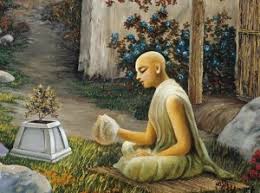
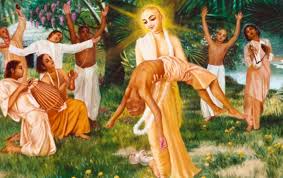
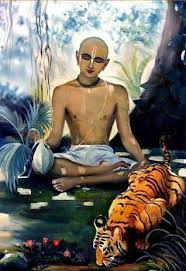
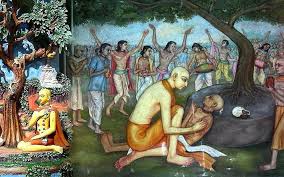
 By Gauri das
By Gauri das


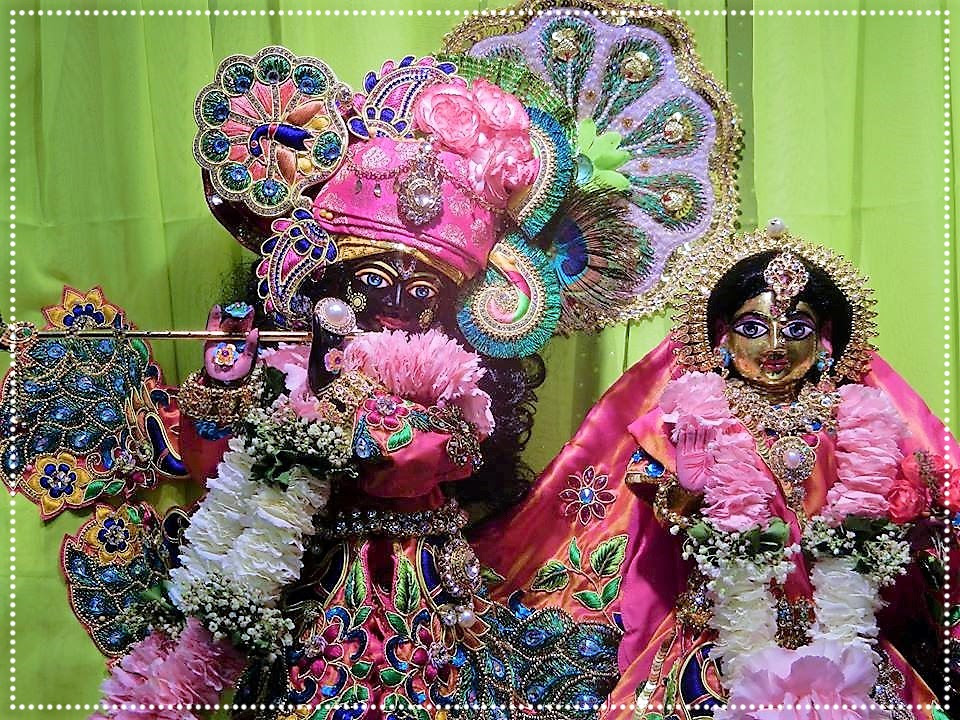

 Indira Ekadasi
Indira Ekadasi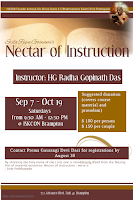
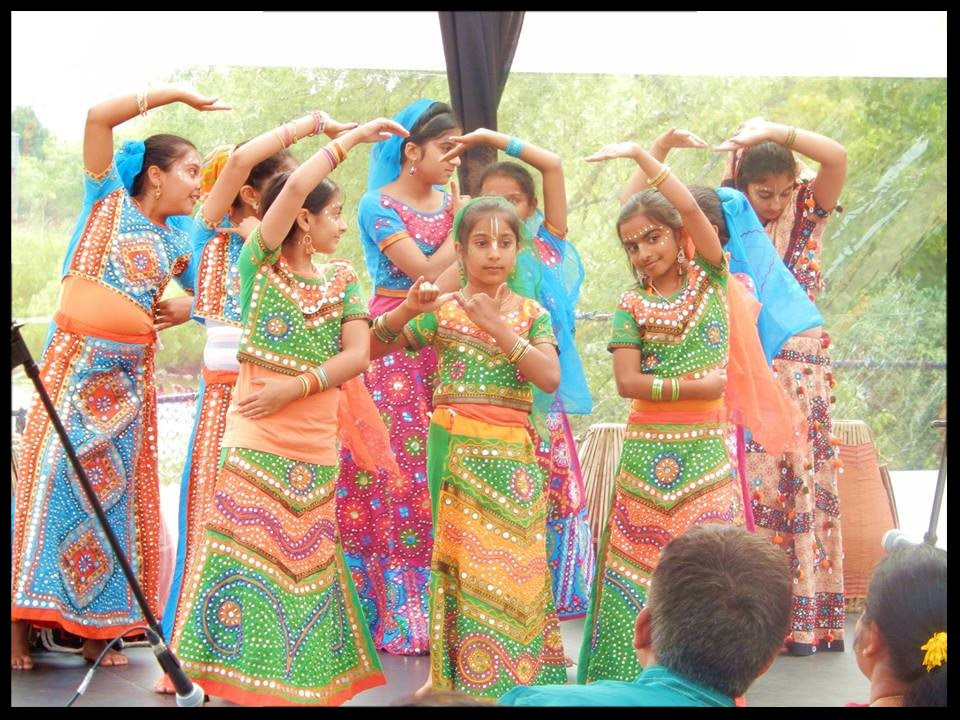

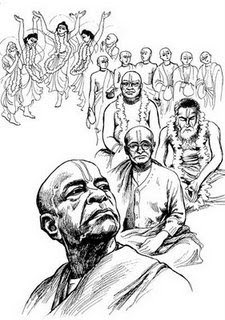


 Giriraj Swami: Today is Bhadra-purnima. Srimad-Bhagavatam (12.13.13) states, “If on the full moon day of the month of Bhadra one places Srimad-Bhagavatam on a golden throne and gives it as a gift, he will attain the supreme transcendental destination.”
Giriraj Swami: Today is Bhadra-purnima. Srimad-Bhagavatam (12.13.13) states, “If on the full moon day of the month of Bhadra one places Srimad-Bhagavatam on a golden throne and gives it as a gift, he will attain the supreme transcendental destination.” 